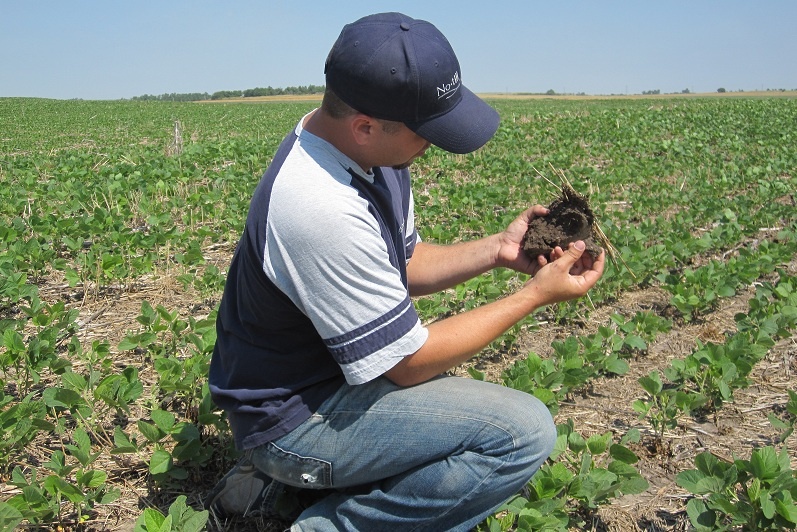Thinking Ahead: Test Your Soil Now, Benefit Later

Fall is the ideal time for soybean farmers across the country to test their soil. University of Illinois professor Richard Mulvaney, Ph.D., and research specialist Saeed Khan explain why soil testing is so important for farmer success and how it can help farmers prepare for next year’s growing season.
Q: Why is it important for farmers to test their soil after harvest?
A: Soil is the main source of nutrients for growing a crop. Knowing the soil’s nutrient status is an important investment in producing next year’s crop.
Q: Does this year’s drought affect soil nutrient status?
A: Although drought can substantially reduce crop nutrient uptake, the unused nutrients do not remain in the form of fertilizer. The soil itself is not a bank account but an active medium, both chemically and biologically. A common misconception is that drought causes considerable carryover of fertilizer nutrients, but for practical purposes this is relatively minor and will not have a huge impact on managing nutrients and applying fertilizer for the next growing season.
Q: Do you have any recommendations for farmers looking to test their soils?
A: Take the time to test the soil properly. While it is important to test the top soil – the first six or seven inches – farmers should also take the time to test the subsoil. The roots of corn and soybean plants go much deeper than six or seven inches, so knowing the fertility level of the subsoil is also important, especially if the aim is high yield.
Q: What should farmers look for after receiving the results of the testing?
A: The pH level is the first thing farmers should look at because it affects the soil in many ways and has so many interactions with other nutrients. Farmers need to ensure that soil pH is at least up to the recommended level and a somewhat higher level can be more beneficial. For example, if the typical pH for a field is between 5.5 and 6, increasing the level to 6.5 or 6.6 would often be cost-effective. If the pH level is low and the soil is therefore too acidic, plants will not be able to fully exploit soil nutrient supplies.
Q: Do you have recommendations for farmers looking to improve the quality of their soil?
A: Some progressive farmers we know have had good soybean yields by applying regular applications of calcitic limestone. Not only does this raise soil pH, but increasing the calcium supply promotes nodulation and root growth, and also improves soil tilth. The result is a soil with greater microbial activity, which enhances nutrient cycling and availability and can reduce the need for nitrogen fertilizer when corn is grown.



